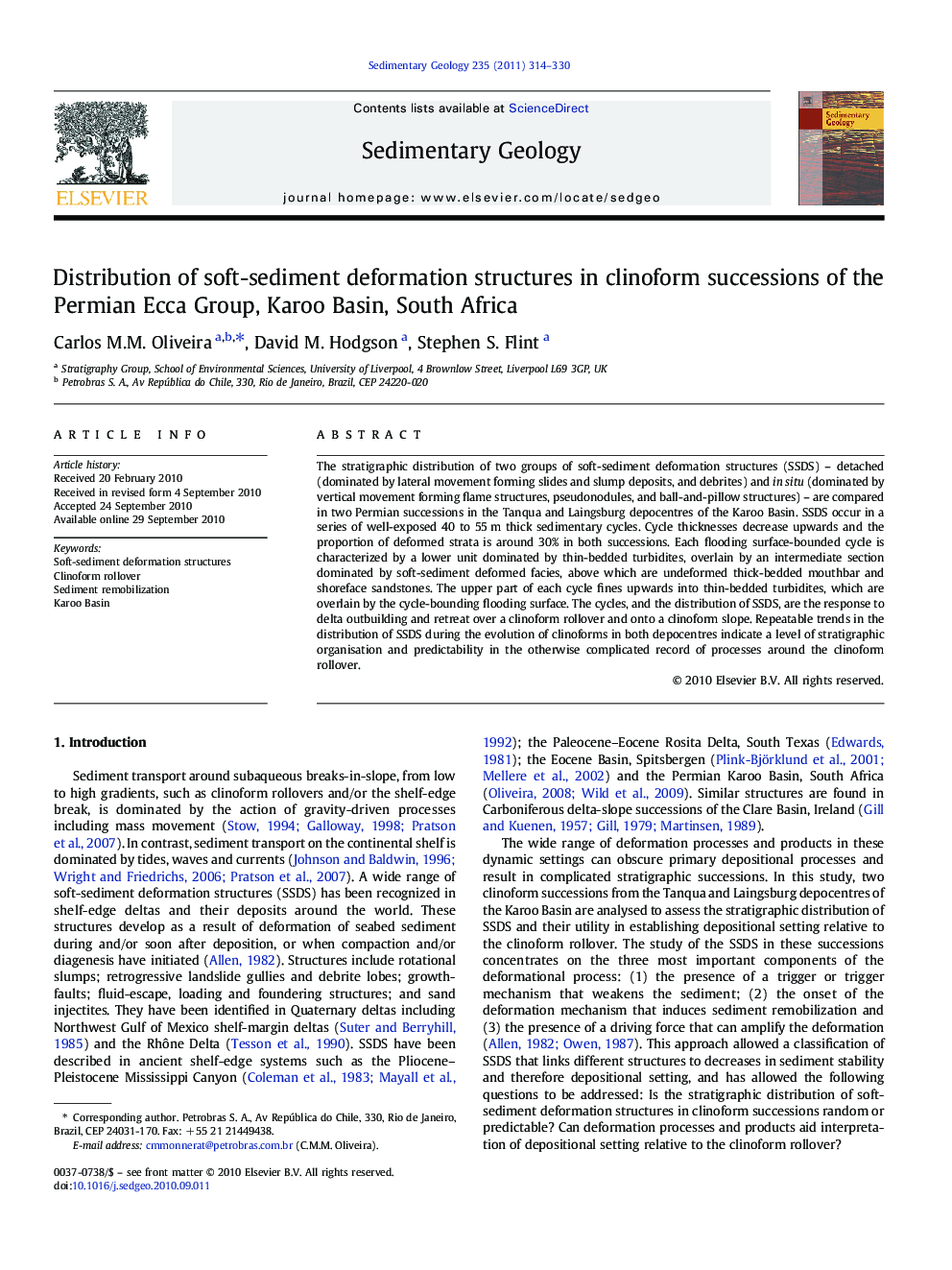| Article ID | Journal | Published Year | Pages | File Type |
|---|---|---|---|---|
| 4690250 | Sedimentary Geology | 2011 | 17 Pages |
The stratigraphic distribution of two groups of soft-sediment deformation structures (SSDS) – detached (dominated by lateral movement forming slides and slump deposits, and debrites) and in situ (dominated by vertical movement forming flame structures, pseudonodules, and ball-and-pillow structures) – are compared in two Permian successions in the Tanqua and Laingsburg depocentres of the Karoo Basin. SSDS occur in a series of well-exposed 40 to 55 m thick sedimentary cycles. Cycle thicknesses decrease upwards and the proportion of deformed strata is around 30% in both successions. Each flooding surface-bounded cycle is characterized by a lower unit dominated by thin-bedded turbidites, overlain by an intermediate section dominated by soft-sediment deformed facies, above which are undeformed thick-bedded mouthbar and shoreface sandstones. The upper part of each cycle fines upwards into thin-bedded turbidites, which are overlain by the cycle-bounding flooding surface. The cycles, and the distribution of SSDS, are the response to delta outbuilding and retreat over a clinoform rollover and onto a clinoform slope. Repeatable trends in the distribution of SSDS during the evolution of clinoforms in both depocentres indicate a level of stratigraphic organisation and predictability in the otherwise complicated record of processes around the clinoform rollover.
